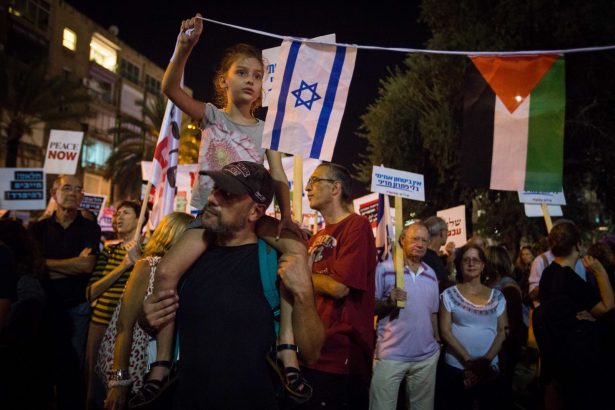The peace process is currently at an impasse. Bringing the parties together for another intensive effort at reaching a deal will not succeed. New thinking and creative solutions are required.
In late 2016, the Britain-Israel Communications and Research Centre (BICOM) hosted a series of private, track-two dialogues between current and former Israeli and Palestinian officials and academics designed to explore new thinking and provide a detailed critique of different ideas to solve the conflict.
Based on these unique discussions, the BICOM research team produced a policy paper proposing a new “hybrid” approach to Israeli-Palestinian peace-making.
Executive Summary
- The Israeli-Palestinian arena is in deep disarray with little progress expected in the short term, and deep pessimism regarding the future. Israelis are plagued by political paralysis, Palestinians suffer from institutional weakness and neither side believes it has a partner for peace. Continuing regional chaos suggests the international community will remain focused elsewhere. With the EU beset by domestic challenges, and with a new US administration still finding its feet, no significant external intervention is anticipated in the short term.
- The failure of US Secretary of State John Kerry’s mediation effort between Israelis and Palestinians in 2013-2014 – following previous unsuccessful attempts to broker a negotiated, bilateral final status agreement – has further eroded the traditional paradigm of bilateral negotiations aimed at achieving a final status agreement. Yet the structural challenges and wide gaps in negotiations along with regional instability, international ambivalence and the absence of final status talks provide an opportunity, and an incentive, to re-evaluate the traditional model for Israeli-Palestinian peacemaking. This paper, which is based on a series of confidential, track-II dialogues between current and former Israeli and Palestinian officials and academics and which took place under the auspices of BICOM and Chatham House, attempts to do just that.
- The dialogue analysed and critiqued four models for Israeli-Palestinian peacemaking: Bilateral negotiations focused on agreed parameters; a regional framework; constructive unilateralism; and Israeli-Palestinian confederation.
- In discussing these models, the participants agreed that any successful process will also require strong third party involvement as well as the creation of grassroots social movements that favour peace and mutual recognition.
- Such third party involvement should attend to the realities on the ground today rather than remaining trapped in a 1990s mind-set, which seeks one more effort to solve the conflict. Independent of any potential Western involvement – which may be limited – the role of regional actors matters hugely. While the Palestinians need regional diplomatic cover to make the two state deal, Israelis need regional involvement in resolving the core issues as well as regional buy-in and cooperation to take the tremendous security risks involved in territorial compromise.
- Moreover, civil society has a key role in creating an environment in which the leaderships can speak the language of peace and in making possible the compromises required by any final status deal. Unfortunately both sides in our dialogue expressed alarm at the current state of public opinion in their respective societies.
- While there was little appetite for returning to the classic bilateral negotiation model without prior agreement on parameters, extensive analysis and critiques of each model did generate an interest in continuing to explore the potential of a “hybrid” model, creatively drawing upon components from each of the four different models discussed. Such a hybrid model would involve a regional framework for a peace process composed of a strategically creative deployment of genuinely constructive, and sometimes coordinated, unilateralism, and bilateral negotiations that move from framework agreements through incremental implementation to final status talks. The advantage of such a model lies in its combination of designing a political horizon or endpoint while harnessing the flexibility of constructive unilateralism, which might begin on a small-scale. Moving away from sequential to parallel incentives, as the Arab League has recently done in the Arab Peace Initiative, and shedding the mantra of ‘nothing is agreed until everything is agreed’, would also introduce more flexibility into the process. Finally, seemingly radical proposals found within the confederative model – such as allowing some Israeli settlers to remain in a Palestinian state with a similar number of Palestinian refugees residing in Israel – may also form part of this model, helping to resolve some hitherto intractable core issues.
The full paper is available here.

































